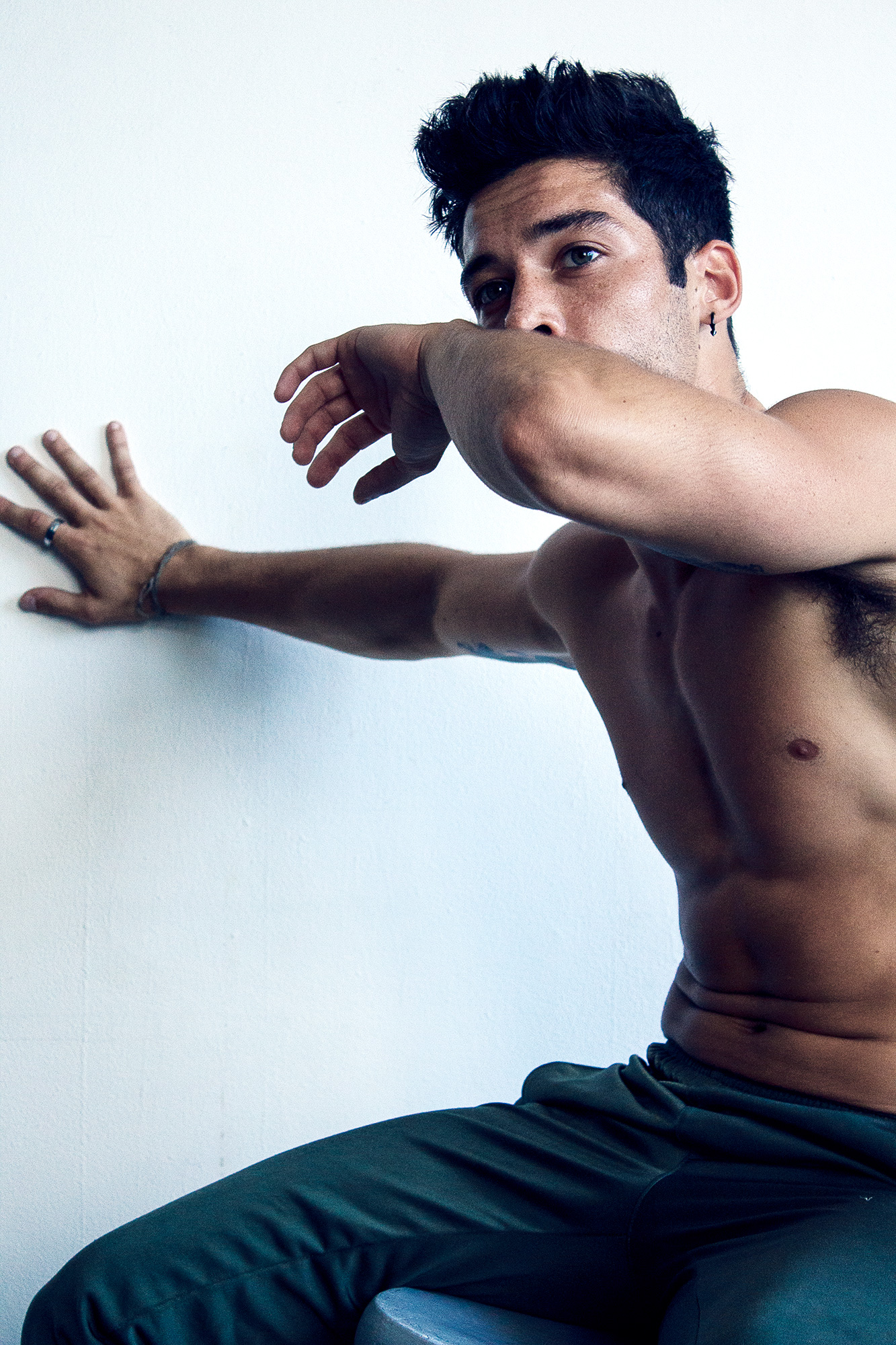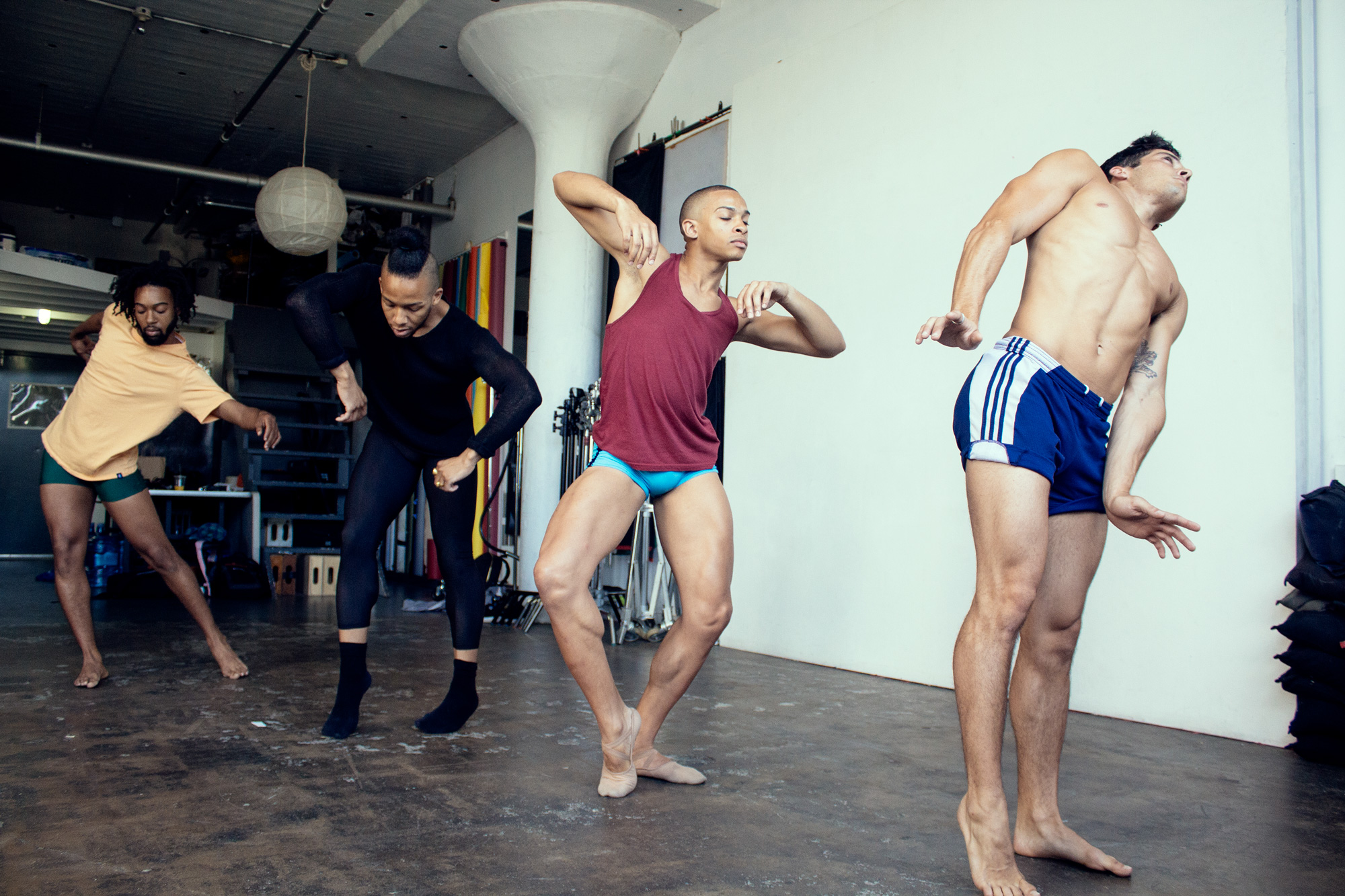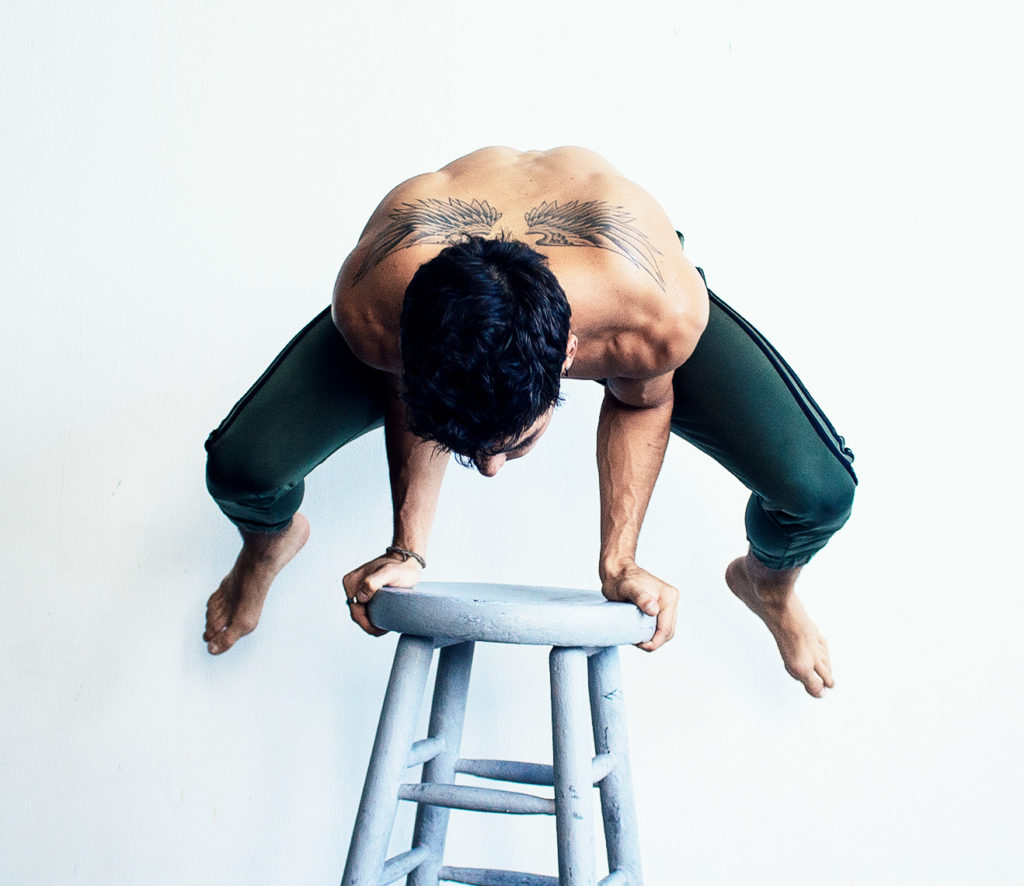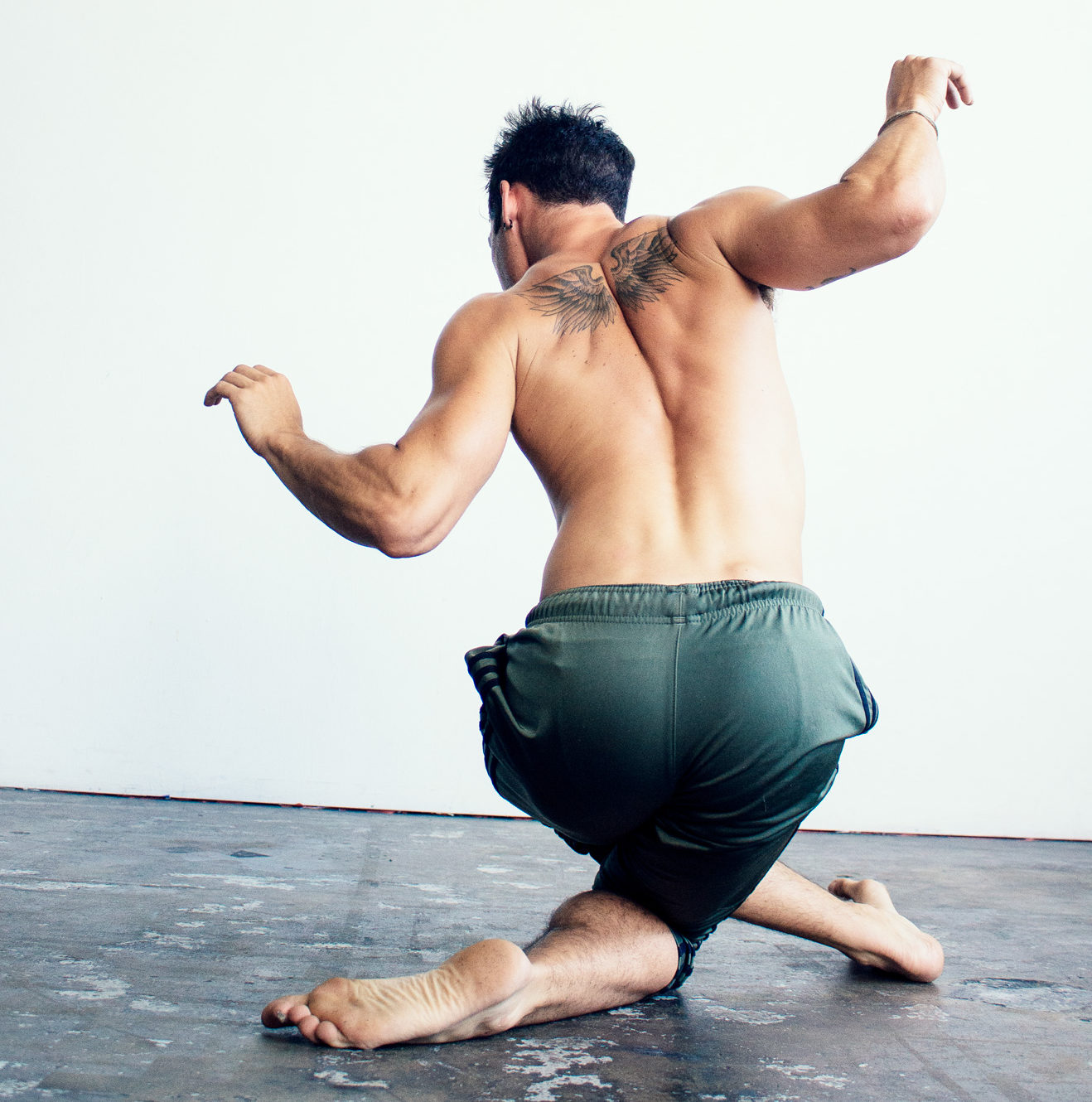Cole is an early-twentysomething New Jersey native rightfully ensuring we see professional dancers as more than art, but a new breed of athletes.
A thought- and movement-leader in more ways than one, Cole knows firsthand the challenges men experience as a result of choosing dance. As he revealed, “I battled the concept of masculinity [and] was bullied for being a dancer, especially when I was younger….
The passion for dance really took form in college when I played rugby and did ballet at the same time… Living in that contrast made my artistry very physical…That dichotomy took me into the next stage of my life with creating my own movement philosophy.”
Eventually, Cole had a life-changing epiphany that inspired him to choose dance. “For so long, I lived kind of two lives. And it was a point on stage during a modern performance that my heart just started crying. I just felt so emotional. It was one of the most powerful feelings I ever felt. I realized there’s no point in living a double life. This feeling is so powerful.”
Few people need to be sold on the power of dance after witnessing it for themselves. But few realize dance’s ability to allow you to speak without words. But Cole could tell you better than anyone else: “You know when somebody says, ‘I just can’t put it into words.’
In every single one of those moments, I could dance something for you. So, any time I’m like, ‘I don’t know…I don’t know how to explain it,’ I would break down into movement and you would get it. It’s just such an organic language. I dance because it’s the thing that gives me the most life…(begins dancing and laughs). You know what I mean?”
Cole proves that #WhenMenDance they not only redefine what it means to be a man on their own terms, but they show us what it means to be human. And the power of embracing our weaknesses.

Cole’s Full Story
My mother was a social dancer who competed sometimes with her dance instructor from Fred Astaire. So at a very young age, she dragged me to competitions and I watched another guy–a good friend of mine now–kill it, rip it up. And I was like, “I don’t know what that is, but I want to do that.” Sure enough, I started taking dance lessons in Brooklyn before I moved to New Jersey.
Campaigns like #WhenMenDance are uber necessary because men are not, and have never been, thought about when you think about dance. That’s why every male in dance feels like they were alone in the world because they danced. I grew up as a Latin dancer, understanding that men lead and women follow, which defined what masculine and feminine was for me at an early age. It’s different when it comes to other dance styles, like modern, ballet, etc.
For so long, I lived kind of two lives. And it was a point on stage during a modern performance that my heart just started crying. I just felt so emotional. It was one of the most powerful feelings I ever felt. I realized there’s no point in living a double life. This feeling is so powerful.
Even when I was a kid–and even now–I don’t think, “Is this masculine or this is feminine?” That ego, that place, that consciousness, I’m past it. Whatever the movement is, I’m interested in it.
It’s freedom with this body that we’re blessed with. It can do so much. Why live within the constraints of normality? That just seems like a waste of a beautiful specimen.
But despite that, I still battled the concept of masculinity because I was bullied for being a dancer, especially when I was younger. I actually had no idea that being a boy dancer was a problem at all until I was in school. People started calling me names and they didn’t want to play with me. So, I started playing football and it kind of changed. I was good at sports, even though I was small. But no matter what, I kept dance and sports separate because if I didn’t have that “masculine” outlet that was seen as normal, I would have been made fun of.
As a heterosexual man, I am often referred to as gay because I dance. And in the eyes of so many people, dance is seen as feminine. But, in reality, dance is the embodiment of both masculinity and femininity blended together.
Growing up, it never crossed my head for a second that dancing was masculine or feminine. It was just cool. As soon as I saw it, I was immersed in it. I was just blown away by what you could do with the human body. [Through dance] my body became open to new movements. It adapted to everything. I was so excited just to see movement I’d never seen before that I became hungry just for movement. Not just in dancing, in everything.
For me, the passion for dance really took form in college when I played rugby and did ballet at the same time. I enjoyed playing rugby and the physicality of it. Living in that contrast made my artistry very physical. If you were to watch me dance when I was kid, you’d see I was very aggressive and like, “Hey! Look at me. I’m here!”
That was how you could describe my movement. But in sports, I was dancing around the field–doing things other kids didn’t do because I could really move. That dichotomy took me into the next stage of my life with creating my own movement philosophy, which eventually led to me working with professional athletes.
At the end of the day, I believe dancers are athletes, a new breed that should be recognized because movement is what drives me. It’s my passion.
You know when somebody says, “I just can’t put it into words.” In every single one of those moments, I could dance something for you. So, any time I’m like, “I don’t know…I don’t know how to explain it,” I would break down into movement and you would get it. It’s just such an organic language. I dance because it’s the thing that gives me the most life..(begins dancing and laughs). You know what I mean?
This type of campaign needs to happen more so kids can have a conversation with their friends, peers, faculty of school, and not feel like they’re being judged or they have to hide what they do. This is actually the first–besides Hearts of Men, a program for men to dance and share their stories–that allowed me to take a moment and talk about what it’s like to grow up with the difficulty of being a man that dances, wanting to dance, and dancing with other men. It’s important to have this dialogue.
Mr. Frederick Earl Mosley, the creator of Hearts of Men, showed me the power of the male community in dance. We all are looked at as though we don’t belong here [in dance], and we just want to express ourselves with beautiful movement. There is dance that a man can explore that a woman may not have access to physically, and so there is a unlimited realm of potential for what the male structure can do in the field of breaking physical barriers.
During that intensive, you share all of these stories with guys of all ages, from 13-70 years old. You talk to all these people, and they tell you why they did and didn’t dance, and why they dance now. That was the first time I ever told people in a public setting that I finally don’t feel alone because they went through what I went through. Now, I simply see dance as a way to be vulnerable, but still be a “beast”–for lack of a better way to say it.
Being masculine is not hiding from your weaknesses, it is finding all of them and bettering them. And, honestly, that’s just what makes a good human being. Literally every weakness you have mentally, physically, socially is required to be your best self.



